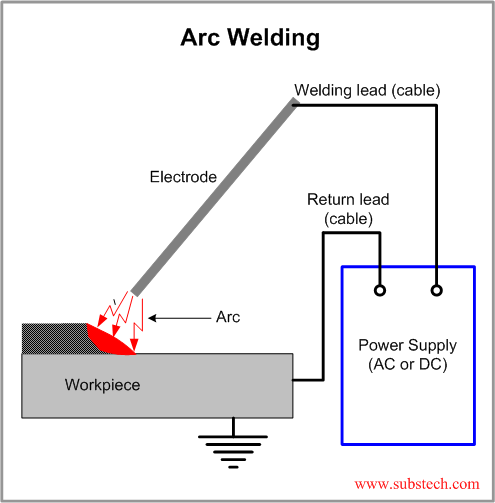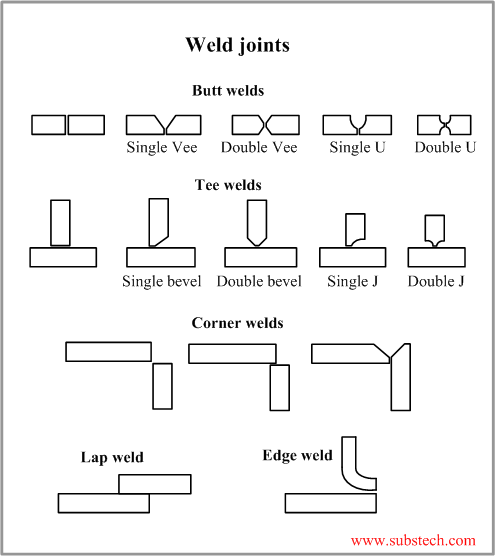Sure, you know you have a weld to make. . .that's the easy part. . . but you need to start by examining your application.. Everybody's job is individual and has specific requirements. Therefore, if you're really confused the best idea is to consult a welding expert in person. If you still have questions after reading this article, just
ask us online.

However, this article can help you with welding process selection in four easy steps:
1.) The joint to be welded is analyzed in terms of its requirements.
2.) The joint requirements are matched with the capabilities of available processes. One or more of the processes are selected for further examination.
3.) A checklist of variables is used to determine the ability of the selected processes(s) to meet the particular application.
4.) Finally, the proposed process or processes deemed most efficient are reviewed with an informed representative of the equipment manufacturer for verification of suitability and for more information
Step 1 - Analysis of Joint Requirements.

The first thing to look at is whether your weld joint is large or small, whether the joint is out-of-position or not, and whether the base metal is thick or thin.
In welding, the needs of any joint are expressed in four terms: Fast-Fill (high deposition rate), Fast-Freeze (the joint is out-of-position - overhead or vertical), Fast-Follow (high arc speed and very small welds), and Penetration (the depth the weld penetrates the base metal)
Fast-Fill is required when a large amount of weld metal is needed to fill the joint. A heavy weld bead can only be laid down in minimum arc time with a high deposition rate. However, Fast-Fill becomes a minor consideration when the weld is small.
Fast-Freeze implies that a joint is out-of-position, and therefore requires quick solidification of the molten crater. Not all semiautomatic processes can be used on fast-freeze joints.
Fast-Follow suggests that the molten metal follows the arc at rapid travel speed, giving continuous, well-shaped beads, without "skips" or islands. This trait is especially desirable on relatively small single-pass welds, such as those used in joining sheet metal.
Penetration varies with the joint. With some joints, penetration must be deep to provide adequate mixing of the weld and base metal and with others it must be limited to prevent burnthrough or cracking.

Any joint can be categorized in terms of the previously mentioned four factors. To determine the appropriate welding process, keep your efforts focused on the requirements of the weld joint. A joint that requires, or can be welded by, just one arc welding process is rare. In fact, the majority of joints usually are characterized
by a combination of these requirements to varying degrees. Once you've determined your appropriate joint requirements and ranked them, have your assessment reviewed by an experienced engineer or welder. With time and experience, you'll be able to make these assessments more accurately and with less difficulty.
Step 2 - Matching Joint Requirements With Processes
Your equipment manufacturers' literature usually will give information on the ability of various processes to fulfill the needs of the joint. (Or, a telephone call or email will bring the needed information.) A wrong answer is virtually impossible at this point, since the deposition rate and arc-speed characteristics of each process can be clearly defined. Since you have characterized your weld joint it is simply a matter of selecting the process that suits your characterization. To view some machines and consumables with various characteristics
click here to view Lincoln Electric's product line.
So what do you do when you find that two or more processes are suitable, which is sometimes the case? You create a checklist!
Step 3 - The Checklist

Considerations other than the joint itself have a bearing on selection decisions. Many of these are specific to your job or welding shop. However, they can be of great importance - and a key factor in eliminating alternate processes. Organize these factors into a checklist and consider them one-by-one:
Volume of Production. You must justify the cost of welding equipment by the amount of work, or productivity, required. Or, if the work volume for one application is not great enough, another application may be found to help offset the costs.
Weld Specifications. Rule out a process if it does not provide the weld properties specified by the code governing the work.
Operator Skill. Operators may develop skill with one process more rapidly than another. Will you have to train your operators in a new process? That adds cost!
Auxiliary Equipment. Every process has a recommended power source and other items of auxiliary equipment. If a process makes use of existing auxiliary equipment, the initial cost in changing to that process can be substantially reduced.
Accessory Equipment. Availability and cost of necessary accessory equipment - chipping hammers, deslagging tools, flux lay-down and pickup equipment, exhaust systems, et cetera - should be taken into account.
Base-Metal Conditions. Rust, oil, fit-up of the joint, weldability of the steel, and other conditions must be considered. These factors could limit the usefulness of a particular process.

Arc Visibility. Is there a problem following irregular seams? Then open-arc processes are advantageous. On the other hand, if there's no difficulty in correct placement of the weld bead, there are "operator-comfort" benefits with the submerged-arc process; no head-shield required and heat from the arc is reduced.
Fixturing Requirements. A change to a semiautomatic process requires some fixturing if productivity is to be realized. Appraise the equipment to find out if it can adapt to processes.
Production Bottlenecks. If the process reduces unit fabrication cost, but creates a production bottleneck, its value is lost. Highly complicated equipment that requires frequent servicing by skilled technicians may slow up your actual production thereby diminishing its value.
The completed checklist should contain every factor known to affect the economics of the operation. Some may be specific to the weld job or weld shop. Other items might include:
- Protection Requirements
- Range of Weld Sizes
- Application Flexibility
- Seam Length
- Setup Time Requirements
- Initial Equipment Cost
- Cleanliness Requirements
Evaluate these items realistically recognizing the peculiarities of the application as well as those of the process, and the equipment.
Human prejudice should not enter the selection process; otherwise objectivity is lost - when all other things are equal, the guiding criterion should be overall cost.
Step 4 - Review of the Application by Manufacturer's Representative.

This may seem redundant, but the talents of experts should be utilized. Thus, the checklist to be used is tailored by the user to his individual situation. You know your application best and your welding expert knows his equipment best. Together, you should be able to confirm or modify the checklist. To contact a Lincoln Electric welding Expert
click here.Systemizing the Systematic Approach.
A system is of no value unless it is used. Create a chart and follow the steps to determining process. By taking the time to analyze each new weld joint, your operation will become more productive and your welding experience will be more fulfilling.









 The first thing to look at is whether your weld joint is large or small, whether the joint is out-of-position or not, and whether the base metal is thick or thin.
The first thing to look at is whether your weld joint is large or small, whether the joint is out-of-position or not, and whether the base metal is thick or thin.
 Considerations other than the joint itself have a bearing on selection decisions. Many of these are specific to your job or welding shop. However, they can be of great importance - and a key factor in eliminating alternate processes. Organize these factors into a checklist and consider them one-by-one:
Considerations other than the joint itself have a bearing on selection decisions. Many of these are specific to your job or welding shop. However, they can be of great importance - and a key factor in eliminating alternate processes. Organize these factors into a checklist and consider them one-by-one:
 This may seem redundant, but the talents of experts should be utilized. Thus, the checklist to be used is tailored by the user to his individual situation. You know your application best and your welding expert knows his equipment best. Together, you should be able to confirm or modify the checklist. To contact a Lincoln Electric welding Expert
This may seem redundant, but the talents of experts should be utilized. Thus, the checklist to be used is tailored by the user to his individual situation. You know your application best and your welding expert knows his equipment best. Together, you should be able to confirm or modify the checklist. To contact a Lincoln Electric welding Expert